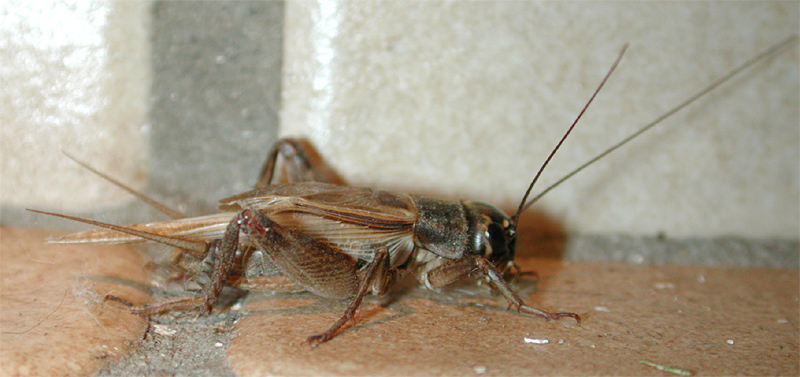 The Domestic, Brown or House Cricket, Acheta domesticus, is the most widely-used live food for reptiles, amphibians, tarantulas, scorpions and other pets. At once hardy and delicate, it eats just about anything and is easy to breed, yet a colony can be wiped out in hours if conditions are not perfect. Whether you need only to keep a few alive so that they can feed for several days (thereby increasing their nutritional value) or plan to save money by ordering in bulk or breeding your own crickets, die-offs can be avoided if you follow a few simple rules.
The Domestic, Brown or House Cricket, Acheta domesticus, is the most widely-used live food for reptiles, amphibians, tarantulas, scorpions and other pets. At once hardy and delicate, it eats just about anything and is easy to breed, yet a colony can be wiped out in hours if conditions are not perfect. Whether you need only to keep a few alive so that they can feed for several days (thereby increasing their nutritional value) or plan to save money by ordering in bulk or breeding your own crickets, die-offs can be avoided if you follow a few simple rules.
Primary Concerns
Poor ventilation, crowded conditions and high humidity are the most common reasons for cricket colony failures. These three factors are related to one another, and will be discussed below.
Natural History
Domestic Crickets are native to southwestern Asia. Escapees have established populations throughout the world, usually in close association with people. Their taxonomic order, Orthoptera, contains over 20,000 grasshoppers, katydids and related insects.
The USA is home to over 120 cricket species; my favorites, the bizarre Mole Crickets, tunnel below-ground with spade-like front legs (please see photo). Over 3,000 species have been described worldwide. New Zealand’s “super cricket”, the Giant Weta, is the world’s heaviest insect…at 70 grams, it weighs as much as a House Sparrow! Read More »
 That Reptile Blog – Reptile, Amphibian and Exotic Pet Care and Information
That Reptile Blog – Reptile, Amphibian and Exotic Pet Care and Information

